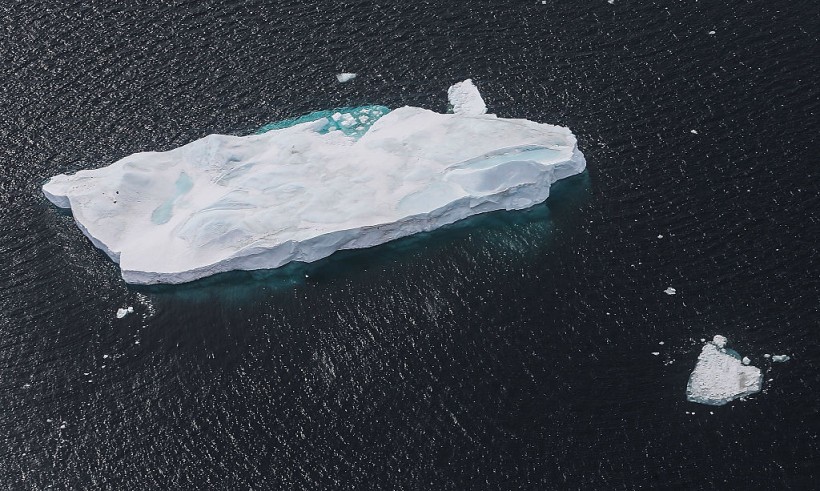An enormous iceberg, known as B-22A, has finally broken free from the seafloor after being trapped in place for over a decade. The iceberg had originally broken off Antarctica's "Doomsday Glacier," Thwaites Glacier, more than 20 years ago.
Iceberg B-22A is the largest remaining piece of B-22, which was the size of Rhode Island when it broke off in March 2002. B-22A covers around 1,160 square miles and still retains much of its original ice.

An iceberg floats near the coast of West Antarctica as seen from a window of a NASA Operation IceBridge airplane on October 27, 2016 in-flight over Antarctica.
Iceberg B-22A Sails Away
The enormous Iceberg B-22A that broke off from Thwaites Glacier in 2002 had been floating near the Antarctic coast until it became stuck on the seafloor in 2012. As per NASA's Earth Observatory, the iceberg only moved an average of 1.6 miles per year, making it one of the slowest-moving icebergs on record.
However, in the autumn of 2022, Iceberg B-22A broke free from the seafloor and began drifting northwest. For five months, it drifted about 110 miles away from the continent. This movement is visible in an animation created using images from NASA's Terra and Aqua satellites.
Iceberg B-22A's long lifespan is uncommon but not unheard of, and its unmooring is significant because it could impact the future of Thwaites Glacier. Grounded icebergs play a crucial role in stabilizing the sea ice in the area, which helps slow the flow of glacial ice into the ocean. Since icebergs do not contribute to sea level rise, but land ice from glaciers does, their impact is significant.
Warm waters reaching into the Amundsen Sea Embayment are believed to have thinned the iceberg from below, making it lose contact with the seafloor and allowing it to drift away with the wind, waves, and tides.
By mid-April, the Antarctic winter had nearly engulfed the area, and the berg was difficult to see from satellite images. Natural color images of the area will be available again when sunlight returns in late August.
How Will It Affect Nearby Thwaites Glacier?
Scientists are worried about the potential impact of B-22A on the stability of the Thwaites Glacier as it moves away from Antarctica, Live Science reported. Stationary icebergs can have a stabilizing effect on glaciers and other ice masses by cooling surrounding waters, but they can also harm marine ecosystems if they get stuck in other areas.
In 2020, experts were alarmed when the world's largest iceberg, A68, was on a collision course with South Georgia, and they feared that the cooling effect of the ice mass could significantly affect the ecosystem if it became trapped on the surrounding seafloor, as did B-22A.
Despite melting at a slower rate than originally anticipated, the Doomsday Glacier is still in a precarious situation, and recent research has shown that its melt rate could rapidly accelerate in the future. Therefore, researchers must monitor any changes that may be triggered by an iceberg's departure.
Researchers will also track B-22A as it moves away from Antarctica to determine where and when it will break apart. As icebergs melt, they can release a significant amount of freshwater, which can impact ecosystems and ocean currents as they slowly dissolve. A68, for instance, dumped more than 1 trillion tons of water into the ocean over three years.
RELATED ARTICLE: Newly Discovered Melting Process Could Impact Stability of Antarctic Ice Shelves, Revealing the Importance of Sea Ice, Ocean Circulation
Check out more news and information on Climate Change in Science Times.














